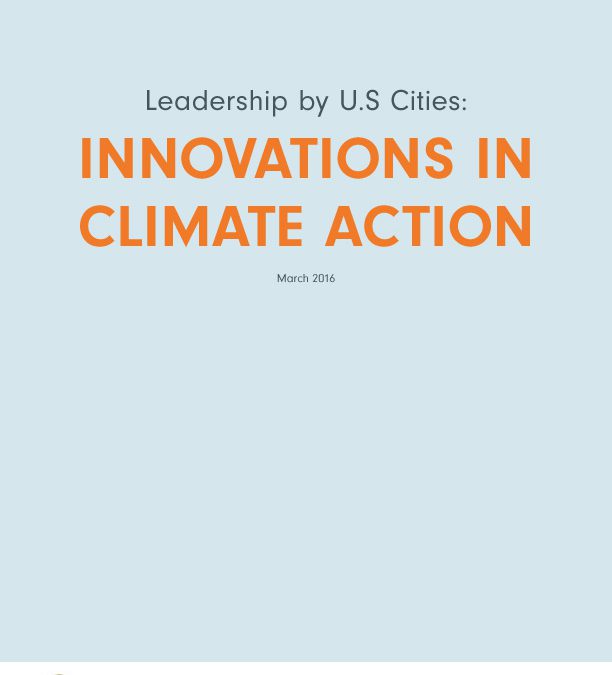Five Insights About Climate Action by U.S. Cities

In a report for Bloomberg Philanthropies, with forewords by U.S. Secretary of State John Kerry and the UN Secretary General’s Special Envoy for Cities and Climate Change Michael Bloomberg, INC identified carbon mitigation and climate adaptation strategies and actions of 26 American cities.
“Leadership by U.S. Cities: Innovations in Climate Action” surfaced five insights that are relevant for cities worldwide. “The innovative trends and systems framework highlighted in this report are valuable tools for cities in the U.S. and around the world to adopt in order to address the challenges they face,” Kerry wrote.
A summary of the five insights:
- Cities are Uncoupling Growth from Carbon. Cities in the U.S. are demonstrating that it is possible to reduce GHG emissions substantially while also growing their economies and populations.
- Cities are Transforming Core Urban Systems. More and more U.S. cities are serving
as “innovation laboratories” for climate action — moving beyond pilot projects to develop and increasingly sophisticated framework for transforming core city systems to achieve desired climate outcomes. - Cities’ Climate Actions are Delivering Impressive “Co-Benefits.” U.S. cities are finding that climate action leads to “co-benefits” for their residents and businesses, including improved livability, economic opportunity, public health and sustainability.
- Cities are Engaging Local Stakeholders in Ambitious, Sustained Climate Action. U.S. cities are developing potent climate- action alliances with local business and community leaders and with specific business sectors, such as health care and commercial property, community-based activists, universities and philanthropies.
- Federal and State Governments are Adopting Policies that Enable Cities’ Climate Actions. Cities cannot do this work alone — many aspects of effective climate action by U.S. cities, especially in transportation and energy-supply systems, depend on enabling policies being implemented by federal and state governments.
For more details and examples, download report here.


